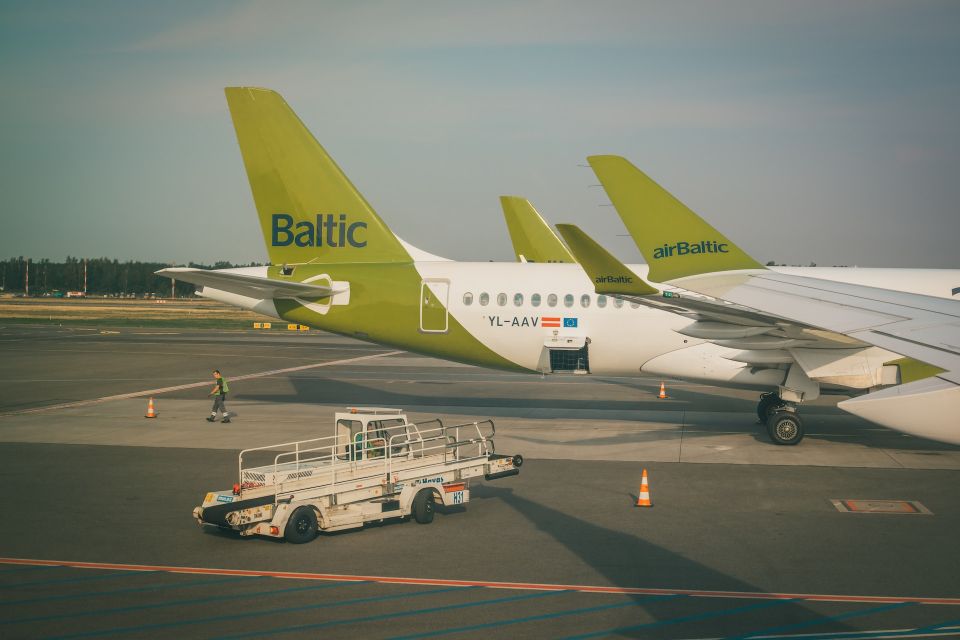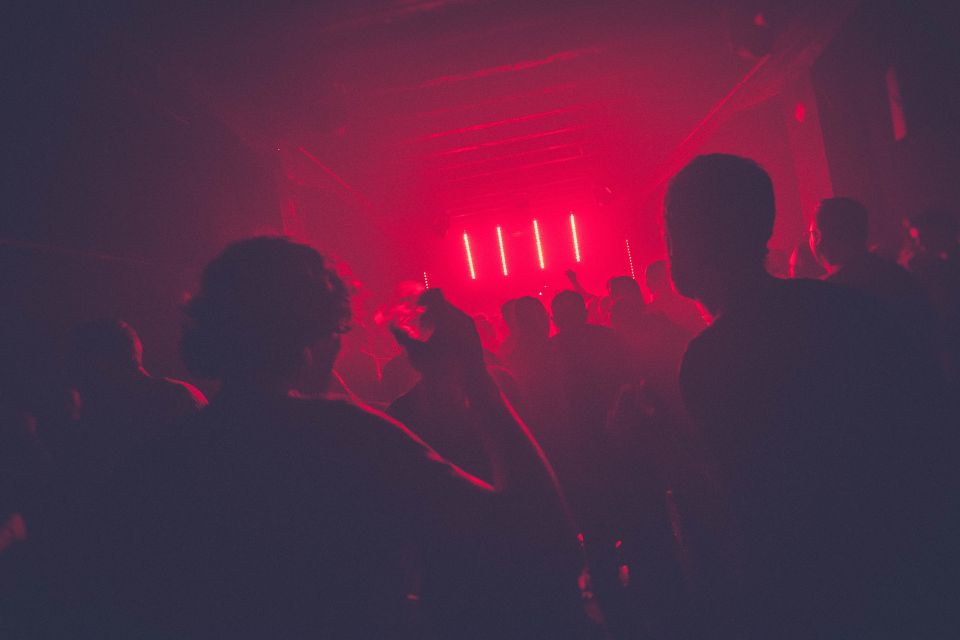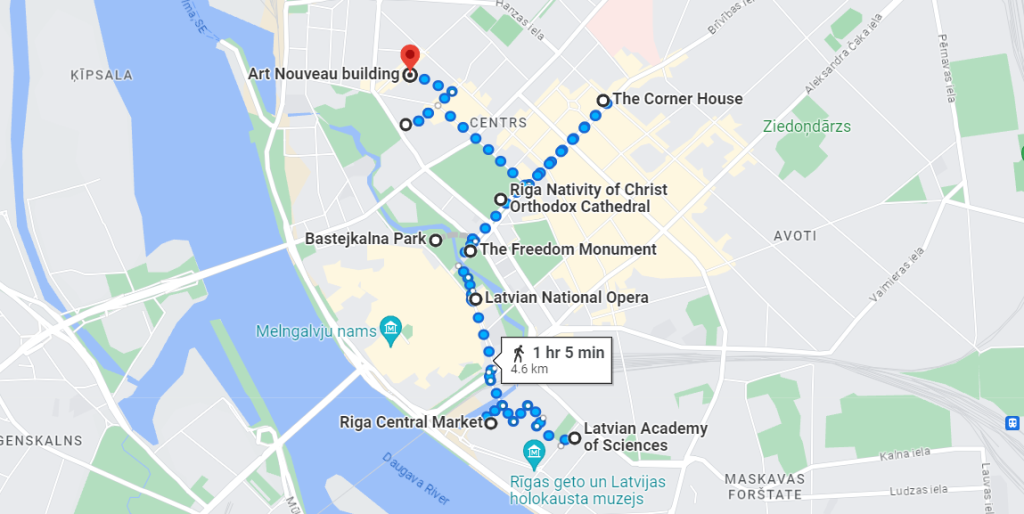Riga 3-Day Travel Guide – What to See and Do in the Capital of Latvia

Have a look at our Riga 3-day travel guide and discover the best the city has to offer, including hotels, restaurants, tips to avoid tourist scams and even a detailed list with everything you must see and do in Riga in 3 days.
The capital of what is arguably the most obscure and secluded nation in the Baltics – Latvia – Riga stands out as an unexpectedly lively city, famous for its bohemian atmosphere and for having the best nightlife in the region, making it an ideal (and budget-friendly) destination for students thinking of an Erasmus adventure.
However, Riga is so much more than just wild parties and underground raves, playing host to one of Europe’s most picturesque old towns, boasting an eclectic blend of architectural styles that shows the diversity of nations and cultures that have controlled the country and left their mark on the city. Deep down, is like having several countries within a small and very exclusive piece of land.
That being said, we invite you to have a look at our Riga 3-day travel guide and discover the best the city has to offer, including hotels, restaurants, tips to avoid tourist scams and even a detailed list with everything you must see and do in Riga in 3 days.
Riga 3-Day Travel Guide

How to get to Riga – Flights from Ireland
Considering this is the largest and most important city in Latvia, it comes as no surprise that the nation’s capital is served by the biggest air hub in all of the Baltics: the Riga International Airport.
As such, if you’re traveling from Ireland, it is possible to fly directly to Vilnius from Dublin with Ryanair and airBaltic.
Alternatively, you can consider flying into Vilnius or Tallinn and then making your way to Riga by bus with Lux Express.
Riga 3-day travel guide – Best time to visit the city

Considering the city is located in the Baltic region, Spring, Summer and Fall are definitely the most sought-after months when it comes to booking a trip to Riga, with the period between May and September standing out as the most researched.
However, and for those strong-willed enough to face the harsh Latvian cold, visiting Riga in the winter can also feel refreshingly rewarding, as several Christmas markets spring up all around the city.
Documents needed for your trip to Riga
Since Latvia is part of the EU, Irish citizens only need to show a valid ID Card in order to be granted access to the country.
Riga 3-day travel guide – Withdrawals, banking fees and travel budget

Since Latvia is part of the Eurozone, just like Ireland, there is no currency exchange, with both nations using the Euro. As such, travelers are able to use the same credit/debit card that they utilize back at home without incurring in any fees. However, keep in mind some local banks or networks (such as the infamous Euronet ATM’s) may charge you a flat fee per withdrawal upon detecting that you’re using a foreign card.
Nevertheless, and so that you can get a tighter grip on your travel budget and things don’t slide out of control, we always recommend using Revolut. Although in Italy you won’t be able to take advantage of the card’s most redeeming quality – to allow you to withdraw foreign currency without any exchange fees – this is still a pretty useful tool.
By using the bank’s online app, you will have immediate access to your balance, as well as all your expenses, allowing you to check in real time whether you’ve been charged any fees for your withdrawals or not. Besides, you may just load your card with the exact daily amount you want to spend on your trip, helping you to avoid overspending and going over your budget. Plus, if you find yourself in a situation where your card got lost or stolen, the only money you stand to lose is amount you had loaded your card with. Sign up for Revolut for free >> to get 3 months of Premium.
Riga 3-day travel guide – Common scams and frauds

Thankfully, Riga can be considered a pretty safe destination. Despite the recent turmoil caused by neighboring Russia, as well as the occasional social unrest caused by the presence of a sizeable community of citizens and stateless people of Russian ethnicity, Latvia is a rather peaceful country, with its security and territorial integrity assured through its membership in both the EU and NATO.
However, and much like you would do in any other big city, using your common-sense is key. That means no taxis whose drivers refuse to start the meter, no accepting help from strangers when you’re using an ATM or trying to buy metro tickets and always keeping an eye out for your stuff when you’re walking through busy areas. To sum up: don’t do anything you wouldn’t feel comfortable doing anywhere else!
As a final note, considering the popularity of Riga’s nightlife, it’s always a good idea to check with a local about the best bars and clubs in the city and, more importantly, which ones you should avoid. Similar to many other places in Eastern Europe, it is not common to see young women (alone or in pairs) wandering along the most touristy areas of the city, approaching strangers and asking them out for a drink. Well, so far so good, but the real problem will come up a few hours later, when the ladies mysteriously disappear and the bar owner hits you with an astronomical bill. Don’t feel like settling the tab? Don’t worry, the two humongous security guards at the door will be happy to convince you otherwise.
Where to sleep in Riga – Hotels and Accommodation

If you’re looking out for a place to stay on our Riga 3-day travel guide then we got your covered!
Although the Baltics are no longer as cheap as they were some 10 years ago, Riga is still a rather affordable destination for the average tourist, especially when compared to the prices one would find in western and southern Europe. Plus, it’s the cheaper capital in the Baltics! This goes for restaurants, transportations and supermarkets, but also for accommodation.
That being said, here are a few hotel options which have passed our value-for-money test:
Riga 3-Day Travel Guide – Transportation between the airport and the capital centre

Upon landing in Riga, the best way to reach the city is by using the line 22 of the local bus network. The bus stop is located right outside the arrivals’ terminal (to the right), and buses run between 05h25 and 00h40, leaving every 15/30 minutes (depending on the time of day). The route will end in the suburbs of Riga, so you’ll need to get out at 11.novembra krastmala, in the Old Town. The trip will take about 30/40 minutes. As for tickets, you can get yours from the automatic machine located at the bus stop (€1,15) or directly from the bus driver (€2,00, card only).
Finally, if you arrive in Riga late in the evening, you may always rely on one of the official taxis. However, expect to pay around €20/€25 for the trip.
Riga 3-Day Travel Guide – Public transportation

Fortunately, Riga is a very compact and walkable city, so, if your accommodation is located near the historic center, chances are you won’t even need to use public transportation (aside from the airport transfers).
Nevertheless, commuters in the Latvian capital can make use of its modern tram system and its vast network of buses, so it’s worth gathering some key information about Riga’s public transportation system.
Riga Tram System – Maps, Tickets and Mobile App

Made up of 10 different lines, and even though it’s not particularly useful from a tourist standpoint, the tram system in Riga is essential to the city’s urban mobility. Plus, the system is integrated into Google Maps, meaning the platform will provide you with real-time information on which line to take and where to catch it to reach your destination. Alternatively, you can use this planning tool designed by the entity responsible for managing public transportation in the Latvian capital, which also includes buses and trolleybuses.
Although running times depend on the lines and the mode of transportation, most routes operate daily, between 05h00 and midnight.
Regular tickets cost €1,50 and are valid for 90 minutes, allowing you to do as many transfers as you like within that timeframe. You can buy your tickets from the automatic machines located inside each station/stop, from one of the multiple Narvesen convenience stores, or digitally through the Rīgas satiksmes app (using your smartphone as a ticket). Every ticket needs to be validated inside the vehicle.
That being said, if you plan on using the tram frequently, it’s worth looking into the daily and multi-day options available:
- 24-hour Pass: €5,00
- 3-day Pass: €8,00
- 5-day Pass: €10,00
Riga 3-day Travel Guide – Free walking tours

While in Riga, you have the option to explore the Old Town with a free walking tour. These tours, led by local guides or tour companies, offer guided visits to the historic center, sharing intriguing stories about each place and providing valuable cultural context. Even though these tours are technically free, it’s customary to show appreciation for the guide’s efforts by leaving a tip at the end. In Riga, a reasonable minimum tip would be around 5,00€.
That being said, here are a few companies that run free walking tours in Riga:
Riga 3-day Travel Guide – Hidden Treasures

With 3 days in Riga, you will have enough time to cover the city’s main highlights, while at the same time getting to check some lesser-known places – both in the Old Town and on the outskirts.
That being said, and because we believe a good traveler must always be able to explore beyond the obvious, we wanted to add a few more obscure places to your list of things to see and do in Riga in 3 days:
National Library of Latvia: Nicknamed the “Castle of Light,” this building is a marvel of modern architecture, both inside and out. For tourists, there’s a small entry fee of just €1,00 for a 60-minute access.
Stradins Medicine History Museum: The kind of place you have to see to believe. While the exhibits are pretty interesting, this museum is mostly known for housing the embalmed body of a two-headed dog, the result of an experiment by the Soviet scientist Vladimir Demikhov. While it might raise some ethical questions by today’s standards and sensibilities, it nonetheless played a significant role in the study of organ transplantation.
Latvian Academy of Sciences: To experience Latvia’s Soviet heritage in all its glory, there’s nothing quite like admiring this colossal structure, built in Stalin’s favorite style, which can also be found in cities like Moscow (The Seven Sisters) and Warsaw (Palace of Culture and Science). You can go up to the observation deck for one of the best views over Riga.
Cathedral of the Nativity of Christ: Away from the imposing Lutheran churches in the Old Town, this Orthodox cathedral is often overlooked by visitors despite standing as one of the most beautiful places of worship in Riga.
Riga 3-Day Travel Guide – What to See and Do in 72 Hours
Since Riga’ essentials can be visited in just 2 days, I highly recommend taking the remaining 24 hours for a well-deserved day trip. That being said, you’ll get to explore the city’s Old Town, walk through the world-famous Art Nouveau district and check out the Central Market, while still saving some time for a visit to the picturesque seaside-resort of Jurmala!
Without further ado, here’s what to see and do in Riga in 3 days:
Riga 3-Day Travel Guide – Day 1: The Old Town

As you start your journey in Riga, your first day will naturally lead you into the Old Town, the heart of the Latvian capital, and one of the prettiest and most surprisingly underrated historic cores in all of Europe! That being said, your first stop will be at the Town Hall Square, a lovely square, destroyed during WWII and later rebuilt, where the world’s very first public Christmas tree was set up! Plus, this is also where you’ll find the House of the Black Heads (€7,00), a historic merchant guild building founded by a brotherhood of merchants and traders, now standing as one of Riga’s most famous buildings. Also in this square, don’t miss out on the Museum of the Occupation of Latvia, which recounts the repression the country was subjected to under Nazi and Soviet rule. From there, meander through the maze of medieval streets in the Old Town and discover some its most colorful and picturesque thoroughfares, such as Jauniela, Pils Iela and Rozena Iela. Along the way, you’ll inevitably stumble upon some of the city’s most prominent churches, including the gigantic Riga Cathedral (€5,00), converted into a concert hall during the Soviet era, and – of course – St. Peter’s Church, regarded as the oldest and most important place of worship in the capital. Plus, its tower marks the highest point in the Old Town, so it’s worth climbing to the top and enjoying the views (€9,00).

By now, your stomach will probably be begging you for a much-needed lunch break, but make sure to leave some room for the digestif. Confused? Turns out Latvia is famous for its Black Balsam, a potent and highly alcoholic herbal liqueur, rumored to be one of Catherine the Great’s (Russian Empress) favorite drinks. As such, make sure to stop by Black Magic, a shop/bar where you can try this… well, interesting drink (let’s just say it’s an acquired taste)! Now that you’ve comforted your mind and body, it’s time to get back to the Old Town and pay a visit to the lovely Livu Square, the most charming and photogenic square in the city, before checking out the Cat House, very popular among visitors for its bristling cat statues adorning the rooftop. According to legend, the man who commissioned the building insisted on placing the cats this way, with their back defiantly turned towards the Great Guild, a trade association that had previously refused him membership. Little did he know that his act of pettiness would become a tourist attraction! As your inaugural day is coming to and end, it’s still worth walking across the Swedish Gate, the only surviving gate from the city’s ancient fortifications; and take a closer look at the Three Brothers, a trio of the oldest residential buildings in Riga, currently housing the Latvian Museum of Architecture. Finally, head out to the banks of the Daugava River and enjoy the sunset next to the grand facade of the Riga Castle, the official residence of the country’s President.

First day wrap-up:
- Old Town
- Town Hall Square
- House of the Black Heads
- Museum of the Occupation of Latvia
- Old Town streets (Jauniela, Pils Iela and Rozena Iela)
- Riga Cathedral
- Peter’s Church
- Black Magic – Riga Black Balsam
- Livu Square
- Cat House
- Swedish Gate
- Three Brothers
- Riga Castle
Where to eat in Riga – Cheap restaurants in the Old Town:
- Folkklubs Ala Pagrabs (Latvian traditional)
- Ezitis (Latvian traditional)
- Daily (Latvian typical canteen)
- LIDO Alus sēta (Latvian typical canteen)
- Indian Raja (Indian)
- Late Night Munchies (junk food – burgers, pizzas and kebabs)
- Rigensis (bakery)
Riga 3-Day Travel Guide – Day 2: Soviet Legacy and Art Nouveau

Now that you’ve had a chance to explore Riga’s Old Town, it’s time to venture into some of the city’s other districts and uncover some of the best-kept secrets of the Latvian capital. That being said, and in order to experience the country’s Soviet heritage in all its glory, there’s nothing quite like admiring the colossal Latvian Academy of Sciences, built in Stalin’s favorite style, which can also be found in cities like Moscow (The Seven Sisters) and Warsaw (Palace of Culture and Science). Plus, for €6,00, you can go up to the observation deck for one of the best views over Riga. Still in time for breakfast, stop by the Riga Central Market, one of the biggest markets in Europe, creatively installed inside five historic hangars where German air force zeppelins used to be constructed and repaired. Apart from the covered stalls, the outdoor area was transformed into a bustling bazaar, offering all kinds of goods. From this point, you’ll start heading north of the city center, passing through Bastejkalna Park, one of the best green spaces in Riga, where you’ll find the Latvian National Opera and the Freedom Monument, which pays tribute to the soldiers who sacrificed their lives during Latvia’s fight for independence between 1918 and 1920.

Near the park, you can also visit the Cathedral of the Nativity of Christ. Away from the imposing Lutheran churches in the Old Town, this Orthodox cathedral is often overlooked by visitors despite standing as one of the most beautiful places of worship in Riga. On another note, if your previous day visit to the Museum of the Occupation of Latvia left you wanting more, you have the option to take a tour of the Corner House (€10,00), the former KGB headquarters in Riga, where you can explore the cells, dungeons and interrogation rooms where dissidents and political opponents used to be held captive and tortured. A bit further to the east, you’ll finally step into the district of Centrs, famous for its absurd concentration of Art Nouveau buildings, a flamboyant style of weird shapes, eccentric details and vibrant colors (a bit like Gaudí’s work in Barcelona). Notably, nearly a third of the buildings in downtown Riga were built in this unique style, and you can find many of these remarkable constructions along streets like Alberta Iela, Elizabetes Iela or Vilandes Iela. To cap off yet another stage in your adventure, you’ll visit the bizarre Stradins Medicine History Museum (€2,50), the kind of place you have to see to believe. While the exhibits are pretty interesting, this museum is mostly known for housing the embalmed body of a two-headed dog, the result of an experiment by the Soviet scientist Vladimir Demikhov. While it might raise some ethical questions by today’s standards and sensibilities, it nonetheless played a significant role in the study of organ transplantation.

Second day wrap-up:
- Latvian Academy of Sciences
- Riga Central Market
- Bastejkalna Park
- Latvian National Opera
- Freedom Monument
- Cathedral of the Nativity of Christ
- Corner House
- Art Nouveau Quarter (Alberta Iela, Elizabetes Iela and Vilandes Iela)
- Stradins Medicine History Museum
Where to eat in Riga – Cheap restaurants in Centrs and around the Central Market:
- Riga Central Market (street market)
- Gauja (Latvian traditional)
- LIDO Vērmanītis (typical Latvian canteen)
- Foodbox (Turkish/Kebab)
- Borsh (Ukrainian)
- Zivju Lete (fish)
- Big Bad Bagels (bagels)
Riga 3-Day Travel Guide – Day 3 – Day Trip to Jurmala and Rundale

Once you’ve seen all of Riga, you’ll use your extra day to venture into some other cool places to visit in mysterious Latvia. For a change of scenery from the bustling capital, for example, we recommend heading to the shores of the Baltic Sea and pay a visit to the charming seaside resort of Jurmala, a classic destination for local beach lovers and one of the top beach getaways in the former Soviet Union! Aside from the usual dip (or, in case of bad weather, a stroll along the promenade), it’s also worth visiting the Dzintari Concert Hall, the Dubulti Lutheran Church or the eccentric Morberg Summer Residence, taking in the views from the observation tower in the Dzintari Forest Park and walking down Jomas Street, Jurmala’s busy main thoroughfare. Located just 25 km away from Riga, getting to Jurmala is a breeze, and you can rely on either the train (30 minutes, €1,50; bound for Majori) or the bus (50 minutes, €2,15; heading to Sloka or Jaunkemeri). If you’re visiting between May and October, there is also the option of going on a picturesque ferry ride (2h30, €20,00 one-way or €30,00 round-trip).

Finally, in case you happen to be in Latvia during the Summer months, when days are suuuuuper long, then you can still take most of your afternoon to check Rundale Palace (€8,00 to €13,00, depending on the season), the most famous and lavish of all the palaces and castles in Latvia. Plus, its gardens are absolutely majestic! To get to Rundale, you’ll need to return to Riga, from where you can catch bus 7480 at the Rigas SAO Station (route suspended during Winter months). As an alternative, you can hop on a bus to Bauska (90 minutes, €3,15) and then transfer to a local vehicle to reach the palace (25 minutes, €1,00).

Third day wrap-up:
- Jurmala
- Jurmala Beach
- Dzintari Concert Hall
- Dubulti Lutheran Church
- Morberg Summer House
- Dzintari Forest Park
- Jomas Street
- Rundale Palace
Where to eat in Riga – Cheap restaurants in Jurmala:
- Dukats (Latvian traditional)
- Hesburger (hamburgers)
- Zem Buram (varied)
- Grilbars MUCA (grilled meats/bbq)
- Kalnakrastu Rausu fabrika (bakery/sweets)
Got more than 3 days in Riga? Then you might want to check out the best day trips from the city:

- Sigulda: Often referred to as the “Switzerland of Latvia,” Sigulda, located in the heart of the Gauja National Park, is a paradise of unspoiled nature and breathtaking landscapes. Beyond its scenic trails, you can’t miss visiting the Sigulda New Castle, the Turaida Castle, and the Gutman’s Cave, the country’s largest and oldest cavern.
- Cesis: Despite looking like little more than a quaint little village, Cesis holds a special place in the collective imagination of the Latvian nation, especially because of its majestic Cesis Castle and the town’s charming medieval-era streets.
- Jelgava: Somewhat off the beaten path, even for seasoned travelers, the unassuming and soviet-looking Jelgava is home to one of the most magnificent palaces in the entire Baltic region.
- Jekabpils and Krustpils: A 2-for-1 deal! Separated by the Daugava River, these are two of the most historical cities in Latvia. While most of the attractions are located in Jekabpils, it’s on the opposite bank that you’ll discover the Krustpils Castle, the most important (and most impressive) landmark in both of these towns.
Traveling soon? Get your Holafly eSIM with a 5% discount for unlimited internet access in any destination. No more worrying about roaming charges or finding local SIM cards. Enjoy unlimited data and stay connected with ease. Order your Holafly eSIM now »
Heymondo offers a wide range of travel assistance insurance policies. They combine the best quality, service and price with various levels of coverage, so you’re covered on your weekend getaways and long trips. Buy insurance »









